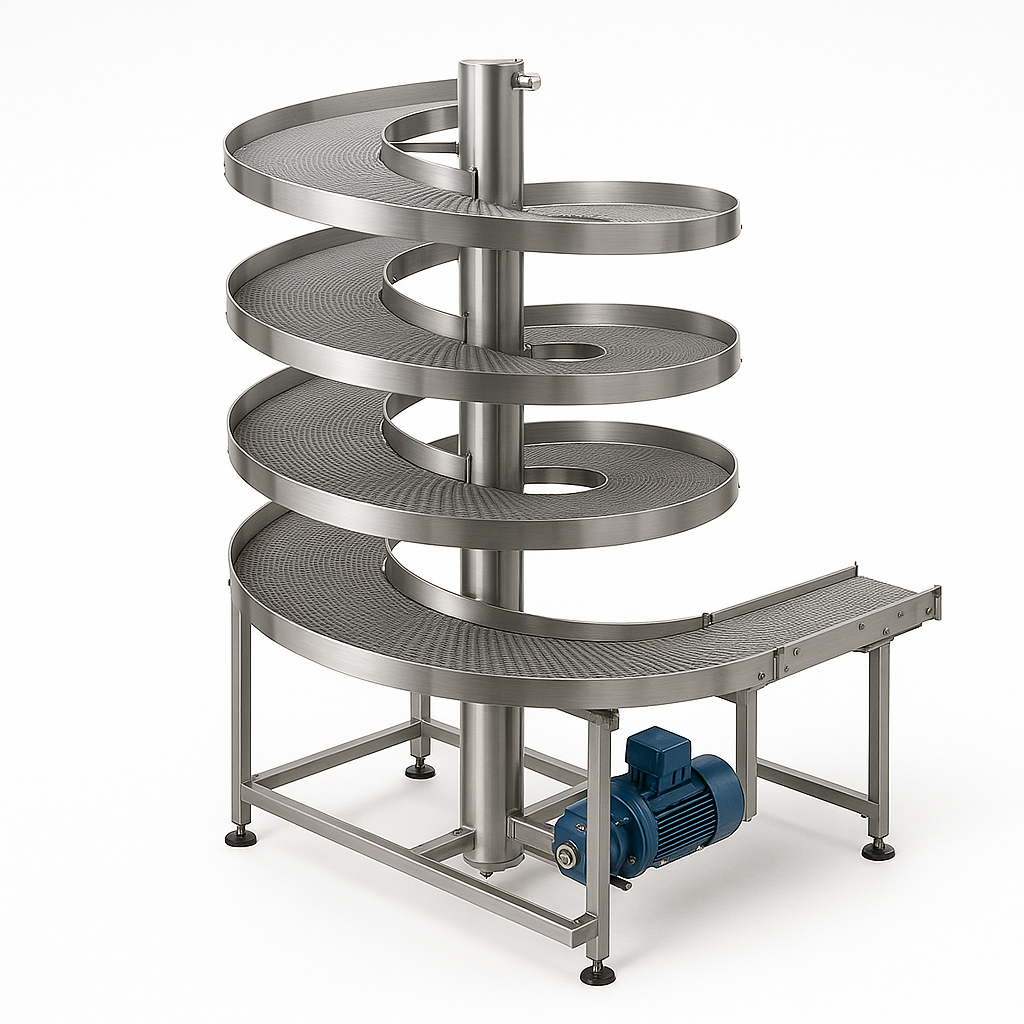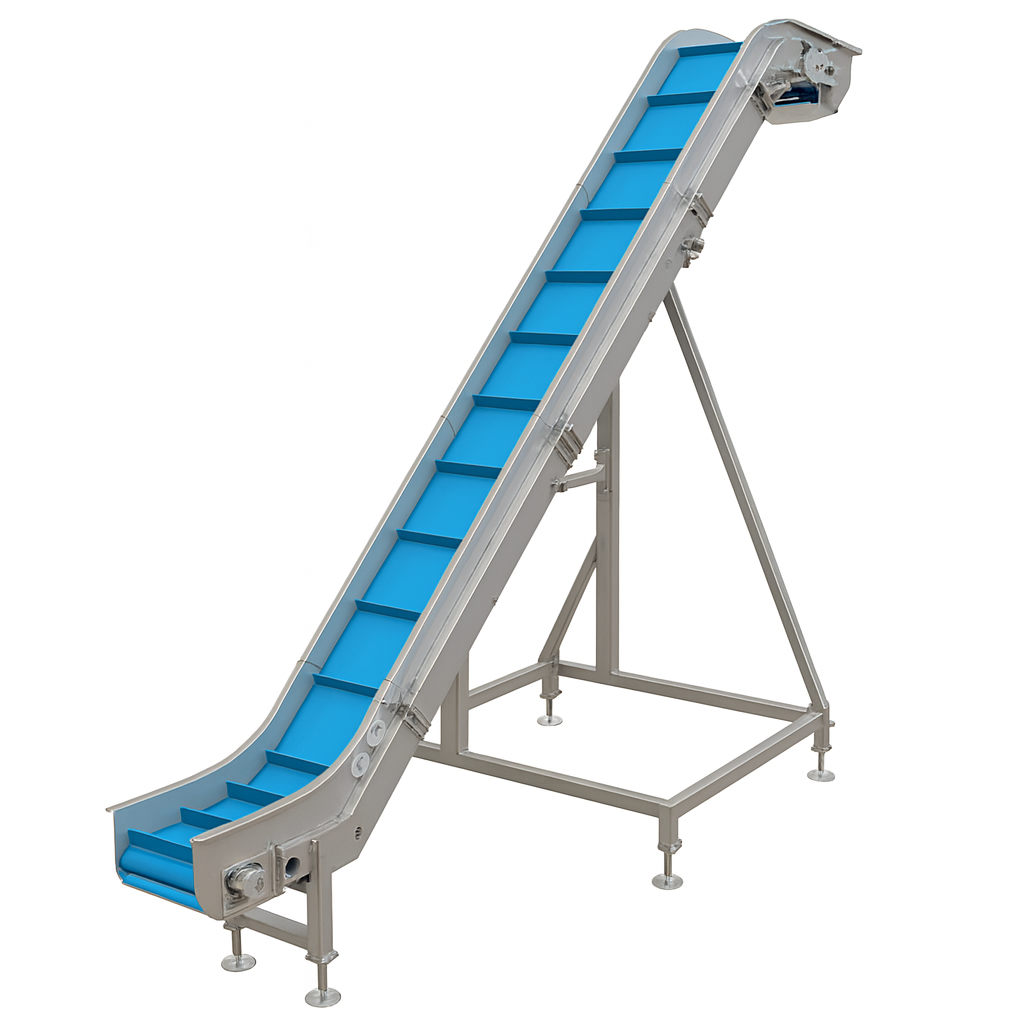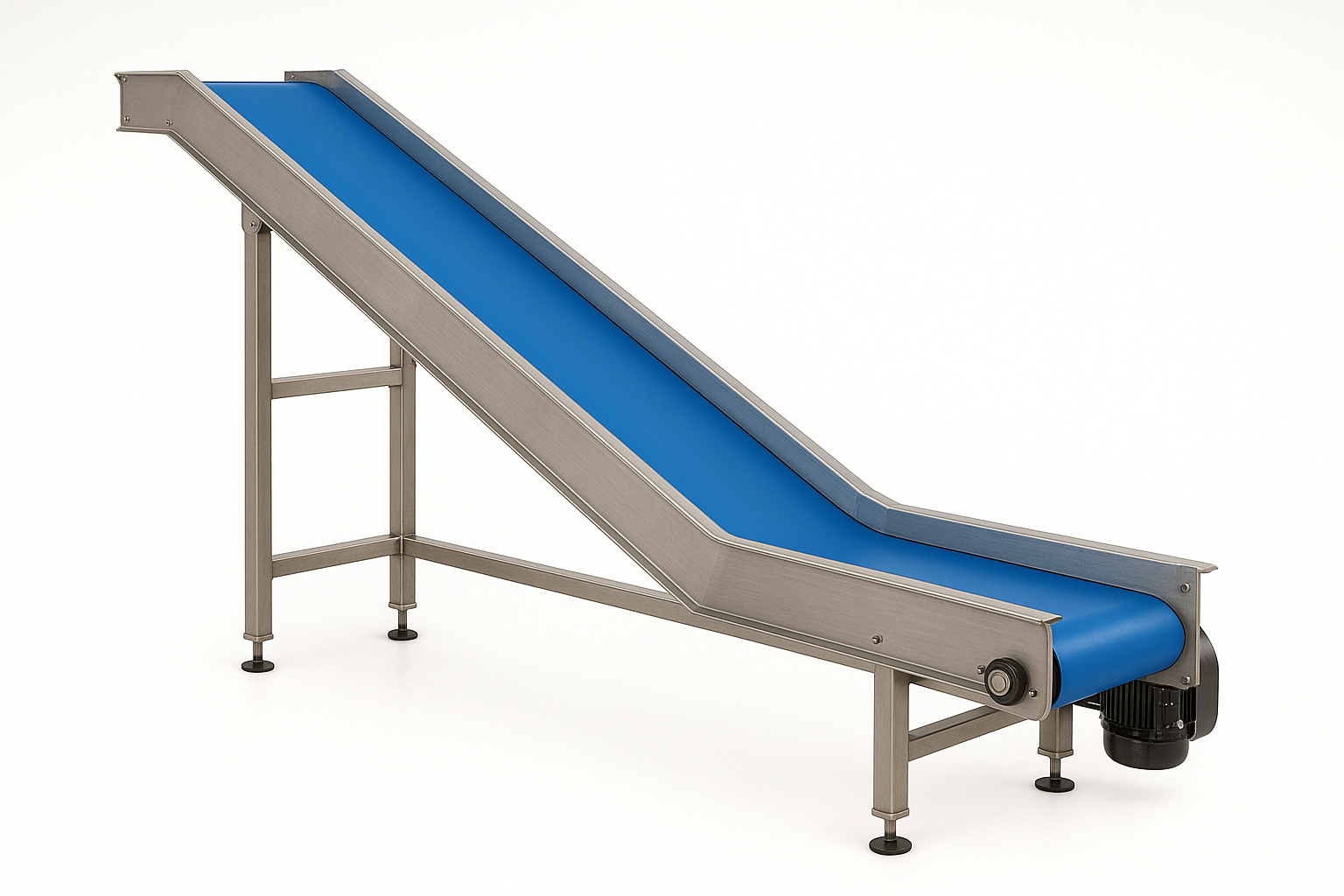So you’re looking to move products from one level to another on a production line. Need to know your options? There’s three popular choices to choose from – spiral conveyors, elevating and incline conveyor systems. Let’s find out which one works best for your business.
What Is a Spiral Conveyor?
A spiral conveyor moves products up or down in a continuous helix. It uses a long belt that curls around a centre column. The system forms a continuous path, so products keep moving without stopping.
How It Works?
Products join the conveyor at one point and travel in a loop until they reach the exit. This gentle, constant motion makes it easy to maintain product flow. There is no loading platform or complex lift system – only a belt or slat running on a spiral track.
Best For:
- Food packaging
- Bottling lines
- Cartons, boxes and packets
- Continuous production lines
- Cooling or drying applications (products take longer to travel, giving more process time)

What Is an Elevating Conveyor?
An elevating conveyor (also known as a bucket or Z-type conveyor depending on design) lifts products between different heights in a more direct, linear route. The belt runs at a steep incline and often has cleats, flights or buckets to hold products in place as they travel.
How It Works?
Products are fed onto the inclined belt. These products may be loose or small items that need to be contained. The system carries them upward or downward at a steeper angle compared to spiral systems.
Best For:
- Snacks, cereals or grains
- Loose or bulk materials
- Agricultural products
- Small parts in manufacturing
- Fragile products in controlled movement

What Is an Incline Conveyor?
An incline conveyor is the simplest way to move goods between heights. It uses a standard belt or modular belt angled upwards or downwards. At its core, it works like any other conveyor – just tilted. It may include side guides or small flights, but does not always need them.
How It Works?
Products are fed onto the lower end and carried to the upper level at a slight to medium incline. These conveyors are often used between machines or to load products into hoppers.
Best For:
- General product movement
- Boxes and packed goods
- Linking equipment across levels
- Light or medium-weight loads
- Cost-effective installations

Real World Examples
To help you out a little further, let’s take a look at a few typical real world scenarios.
Scenario 1: A bakery needs to move bread loaves from an oven line on a mezzanine down to the packing area one level below. The bread must travel safely and cool slightly on the way.
Scenario 2: A snack factory needs to move loose crisps from a fryer up to a multi-head weigher above a packing machine. The product must not break.
Scenario 3: A warehouse needs to move boxes of mixed goods from a ground-level picking area up to a shipping platform for loading. The line needs to be cost effective and easy to modify in the future.
Ready to Improve Your Production Flow?
Picking the wrong conveyor can slow your line, damage your products, and eat into profit. The right choice can save space, boost throughput and cut manual handling.
At Unitech Conveyors, we build spiral, elevating and incline conveyors right here in the UK. And if you’re still not sure which conveyor you need, we are happy to guide you!
Simply contact us today on 01543 675800 or drop us an email – info@unitech.uk.com
